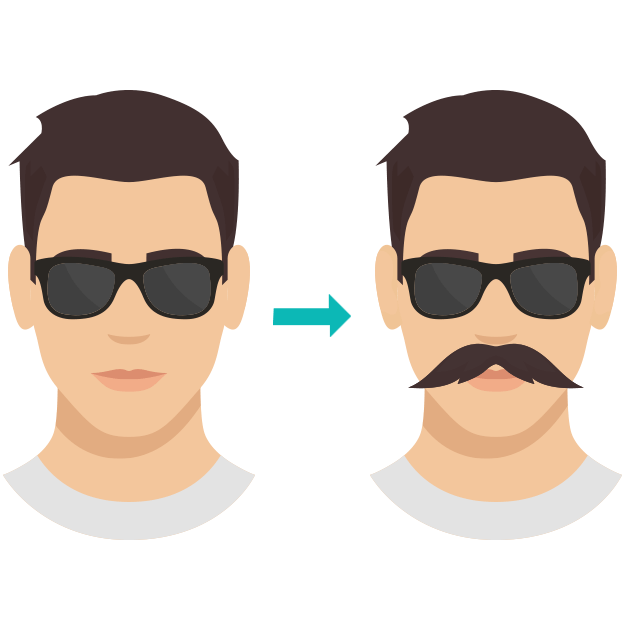Eyebrow transplant
One of the most popular treatment options is brow transplantation. As we get older, our brows lose thickness and volume. It is possible to restore the volume and thickness of the eyebrows through brow transplantation. Eyebrow loss can be caused by trauma, burns, or accidents. In these cases, brow transplantation is a successful procedure.
What Causes Eyebrows to Thin and Fall?
- Aging is one of the most common causes of brow loss. Hormones change as we get older. Hair and brow loss may occur as a result of these changes.
- A lack of nutrients is another cause of brow shedding. Unbalanced nutrition and failure to take the proper nutrients can cause brow loss.
- Eyebrow loss is another symptom of hypothyroidism. Eyebrow loss occurs when the thyroid glands are unable to produce the necessary hormones.
- One of the leading causes of hair loss is chemotherapy. Unfortunately, while it kills cancer cells, it also damages hair cells and causes brow loss.
What is the procedure for brow transplantation?
The procedure for brow transplantation is done under local anesthesia. On average, this procedure takes 3-4 hours. Roots taken from the nape area are used in brow transplantation, just as they are in hair transplantation. The roots must be positioned in a specific direction and at a specific angle. The reason for this is that, while hair follicles exit the skin at a 45-degree angle, they exit the skin at a 10-15-degree angle in the brow area. As a result, extreme caution should be exercised when opening the canal during brow transplantation. If an erroneous brow transplant is performed, the brow may grow in the opposite direction or downward. As a result, working with a doctor who is an expert in the field of brow transplantation is essential.
What should you think about after you've had your brows transplanted?
The manner in which the procedure is carried out is critical to the success of eyebrow transplantation. However, the success of the operation is influenced by the patient's ability to look at his brows after the procedure.
For the first week after brow transplantation, small crusts can be seen in the transplanted area. Because the crusts will fade quickly, it is safe to return the patient to his normal routine after brow transplantation. After planting, you should wait two weeks before going into the sea or swimming pool. Because the sun's rays are harmful, that area must be shielded from direct sunlight. It's also not a good idea to go to the solarium or engage in strenuous sports.
Is it true that seed cultivation aids in the shaping of the body?
Eyebrow transplantation can be used to shape the brows, which is a very important question for patients who are unhappy with their current brow shape. During eyebrow transplantation, shape changes such as blunting pointed eyebrows, thickening or straightening curved eyebrows can be made based on the patient's request.
When do brows grow back after being transplanted?
One of the questions that people have is how long it takes for eyebrows to grow back after being transplanted. After 3 months, eyebrows begin to grow after transplantation. The eyebrows take 7-8 months to reach their final shape. Hair loss in the eyebrows occurs 15 days after transplantation, just like hair transplantation. These spills continue for another three months. However, there is no loss of brows after three months.
Because the nape is the preferred donor area for brow transplantation, eyebrows grow at the same rate as hair. The eyebrows adapt to the planted area after a year and begin to grow slowly. In other words, the need to trim the brows by cutting them decreases after a year.
Failures of brow transplantation can be attributed to a variety of factors
The most common reason for eyebrow transplantation failure is poor technique during the procedure. The method used in planting operations performed by people who are not experts in the field, as well as the inability to adjust the angle correctly during planting, may result in an unsuccessful planting.
Scarring in the transplanted area is a natural result of injury to the dermis layer of the skin following a natural injury or a surgical incision (cutting open) during an operation. This situation makes the planting process difficult, and because the skin isn't of good quality and can't be fed, the transplanted roots have a hard time adhering.
Permanent make-up in the area where brow transplantation will take place is also a concern. It's the same as planting in a scarred area.
Finally, one of the reasons for unsuccessful transplantation is that the expectations of eyebrow transplant patient candidates do not match the reality after transplantation. During the interviews leading up to the brow transplant, the patient should take it easy. It also needs to be oriented correctly. Sowing should be avoided if the expected image and the possible image after the procedure do not match.
Stages of Eyebrow Transplantation
First, a sufficient area for brow transplantation is shaved from the patient's donor area. It is not necessary to shave all of your hair. The roots are removed from the donor area one by one and placed in the organ transplant solution. This procedure is carried out in order to preserve the roots' vitality.
The channels are opened one by one with fine needles to the eyebrow drawing area planned before planting after the roots have been removed. The roots in the solution are placed one by one into the channels that have been opened. A natural image is captured by paying attention to the direction of the brows while placing the roots.
After the brow transplantation procedure is completed, the patient is informed about what to expect after the procedure and how to use medication.

Beard Transplant
For various reasons, such as genetics, physical trauma, surgical injury, or congenital defects, men's beard areas may not grow or be beard sparse. Because it creates a distorted image, this situation can have a negative impact on people. In these situations, beard transplantation is a surefire and long-term solution.
What is Beard Transplantation and How Is It Performed?
Hair follicles from the donor area are used in beard transplantation, just as they are in eyebrow and hair transplantation. These roots are placed in the areas where they will be planted. If there is beard loss in a specific area, the number of roots to plant is determined by the density of beards in the remaining areas. This number varies from one person to the next. In cases where the beard isn't completely or sparsely bearded, however, between 1000 and 3000 roots are required on average.
Following a Beard Transplant
The channels opened after the beard procedure may cause minor redness (blood clots). However, there is no need to be concerned because the clots are cleaned and the beards begin to appear after the cleaning is completed at least 48 hours after sowing. Blood circulation occurs in the transplanted areas because the transplanted beard roots will be nourished by the body. Within 1-2 weeks, these blood vessels will vanish. Acne can be seen in the planting area at the same time. This is also a common occurrence.
Root Number Calculation
In an average person, 350 to 500 roots are required for a mustache.
For a full goatee, 600 to 700 roots are required.
Sideburns should be 200 to 250 roots, and cheek beards should be 300 to 700 roots.
Required. These calculations, however, are averages that vary depending on the needs of the individual.
Who are the candidates who are eligible?
It is appropriate for people who are experiencing shedding in these areas and are looking for a long-term solution. There must be enough hair in the donor area for this procedure to be successful (ie on the back of the scalp).
Sowing techniques such as FUE or DHI are used. Hair is removed from the back of the scalp and replanted in the areas of the face where the patient wants to grow. The way the donor hair is removed from the back of the scalp differs significantly between the two procedures. Because this technique is inherently delicate, the surgeon must carefully draw the facial features as well as place and direct the hair follicles in the proper direction, angle, and density.
What is the procedure for transplanting a beard?
In FUE or DHI hair transplant techniques, both local anesthetics and oral sedatives are used. Depending on the patient's aesthetic needs, the procedure can take anywhere from 2 to 8 hours. Small red crusts form on the newly planted roots after the procedure, but they disappear within a week.
The transplanted hair begins to fall out after 3 to 4 weeks. Because the roots beneath the skin are still present, this is a completely normal process, and new hair will begin to grow in 3 to 4 months. Newly planted facial hair is permanent and grows in the same way that natural facial hair does. Men can shave and groom their hair and mustache like normal facial hair once they reach adulthood.
Are the results permanent?
Yes, the hair growth will be permanent once the newly planted roots are established, and it will need to be shaved like normal facial hair
